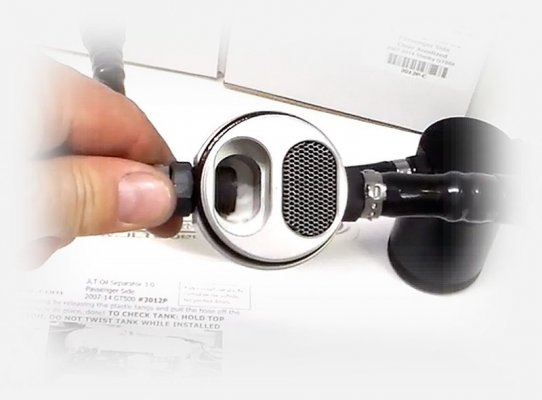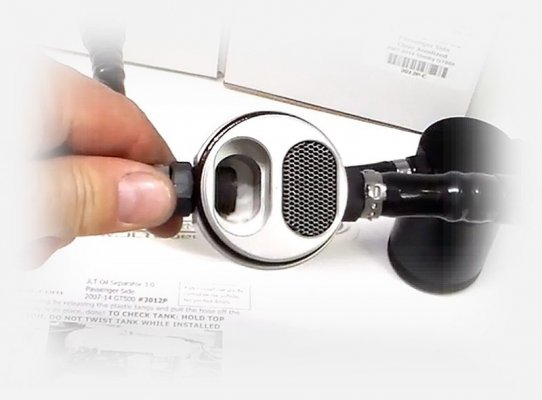The function of the can is to get the oil separated from the air, then stored in the reservoir. If the whole thing is stuffed, with filter media, then you (1) lose reservoir capacity and (2) you keep the oil up top near the outlet. This essentially creates a bridge consisting of a bunch of tiny paths for the oil to be pulled along by the airflow so it's led from the inlet side to the outlet side, bypassing the purpose of the catch can. The can would just be slowing down the flow of the oily air instead of filtering it.
A catch can works by coalescing. The oily incoming air needs to get tangled up in the filter media so that the tiny oil droplets collide with and stick to the filter media. More oil droplets collide with and stick to the existing droplets (coalesce), and they form a larger drop that's too heavy to remain suspended in the air stream, so they drop out of it and drip into the bottom of the reservoir. The air keeps moving as it's much lighter than the oil and its molecules can pass through the media with no problem.
From JLT's site:

"Filtering consists of a fine mesh stainless steel screen that traps fine oil vapors and releases them once heavy enough to fall. They then pass through a 1/2" thick 1/16th" aluminum honeycomb filter where they grow every larger and then fall into the bottom. By the time the oil gets through the filter it's too heavy to be passed on into the intake."
My understanding from this is that there's filter media behind that screen that we can see in the pic. It would make sense to me that that would be the inlet and the open area to the left is the outlet. If so, and if there's a fine screen behind it, then it's probably pretty good as-is and additional, coarser media wouldn't make any real improvement. At least, nothing worth the modification necessary to secure it.


